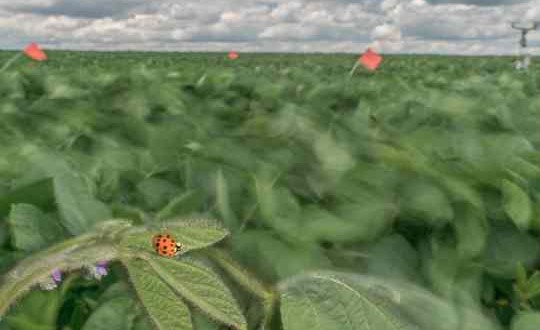A new study by a University of Wisconsin Madison zoologist has found that declining wind may alter predator-prey relationships.
The study has demonstrated the way “global stilling” or declining wind may alter predator-prey relationships.
“There are all sorts of other things that are changing in the environment that affect animals and plants and their interactions,” says Brandon Barton, a UW-Madison postdoctoral researcher. “My students and I were standing out in a cornfield one day as big gusts of wind came by, and the corn stalks were bending almost double. From the perspective of an animal living in the corn, we thought, ‘That’s got to have a big effect.'”
Wind speeds in the Midwest are expected to decline as much as 15 percent during the 21st century. Earth’s poles are warming faster than the equator, robbing the atmosphere of some of the temperature differential that creates wind. And the trend across the American landscape is to put up barriers to the wind in the form of buildings and more natural structures.
“In North America, we’ve been replanting trees that were lost in the 1800s, after settlers showed up and just leveled places like New England,” Barton says.
That’s good news for hungry lady beetles, according to research Barton published in the September issue of the journal Ecology.
Lady beetles eat a major soybean pest, the soybean aphid. Barton grew plots of soybeans in alfalfa fields, protecting some with wind blocks and leaving others in the open.
He found two-thirds more lady beetles in the plots hidden from the wind, and twice as many soybean aphids on the plants growing in the open.
Wind has no direct effect on the aphids, tiny insects that hug the plants and anchor themselves while feeding with a needle-like mouthpart called a stylet.
“The aphids appear on the plants whether it’s windy or not, and we showed that in lab experiments,” Barton says. “But when you add the predators, with the wind block, the beetles eat something like twice as many aphids.”
In his lab trials — simulating wind with fans and windless movement with a machine that tugged on tethered plants to shake and bend them — a stilled soybean plant represented a smorgasbord for the lady beetle.
“How do you do your duty as a predator if you’re entire world is moving around?” says Barton, whose work is funded by the National Science Foundation. “If the plant is moving, it takes four times as long for the predator to start eating, and it eats less than half as many aphids in an hour.”
Slower natural wind speeds could reduce the amount of pesticide required to keep soybean aphids from wrecking harvests. And the wind research may present other opportunities for pest control.
“By growing trees or not harvesting them around a field, you may be able to have an indirect effect on the number of aphids on your soybean plants,” says Barton, who wonders what other close animal relationships may be disrupted by shifting winds.
“The mechanism may be different for other predators, but it’s not hard to start thinking about effects,” he says. “Think of a wolf or coyote. Larger predators hunting by scent — and the prey trying to detect their predators — may be affected by less wind moving scents around.”
Agencies/Canadajournal
 Canada Journal – News of the World Articles and videos to bring you the biggest Canadian news stories from across the country every day
Canada Journal – News of the World Articles and videos to bring you the biggest Canadian news stories from across the country every day



